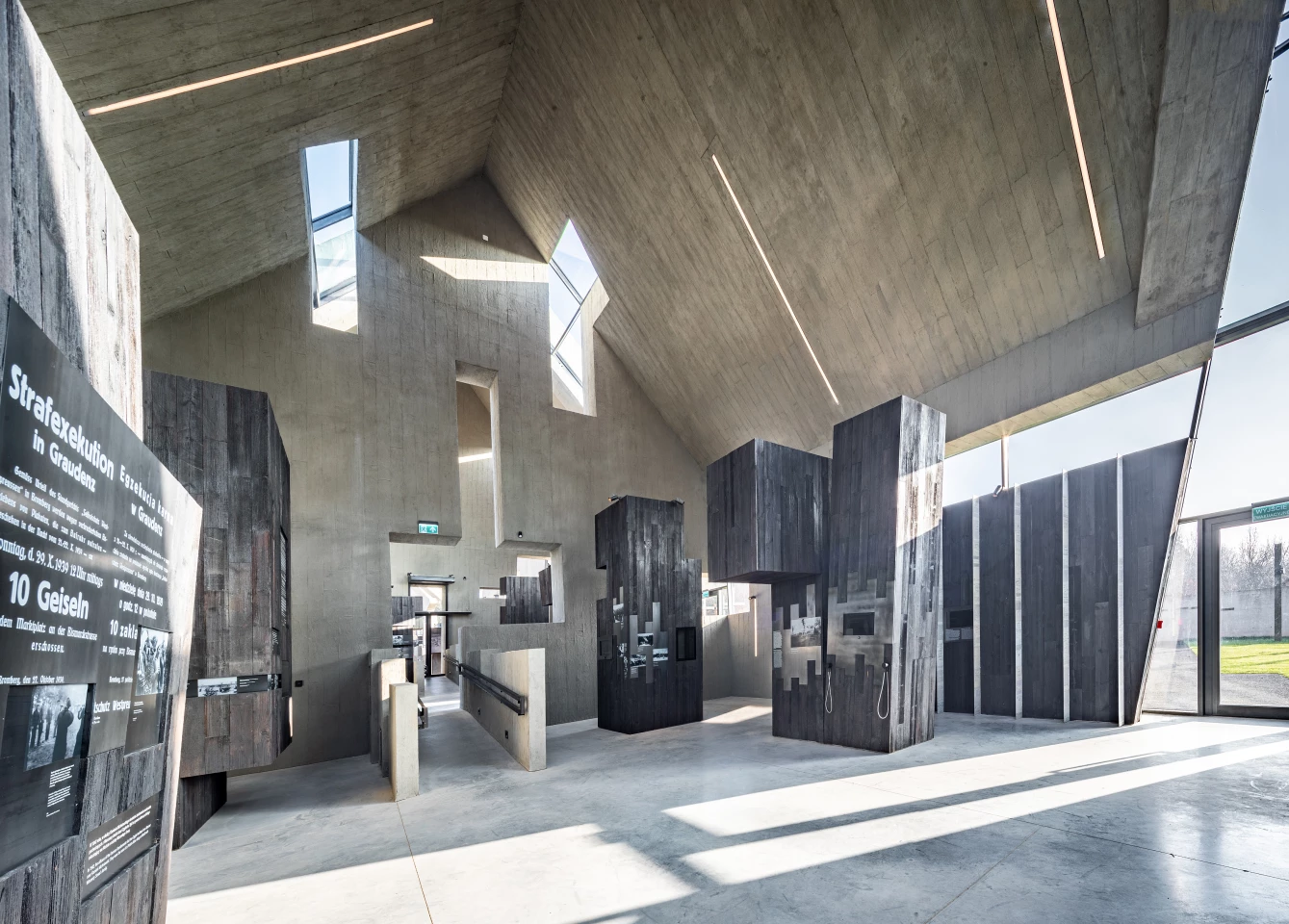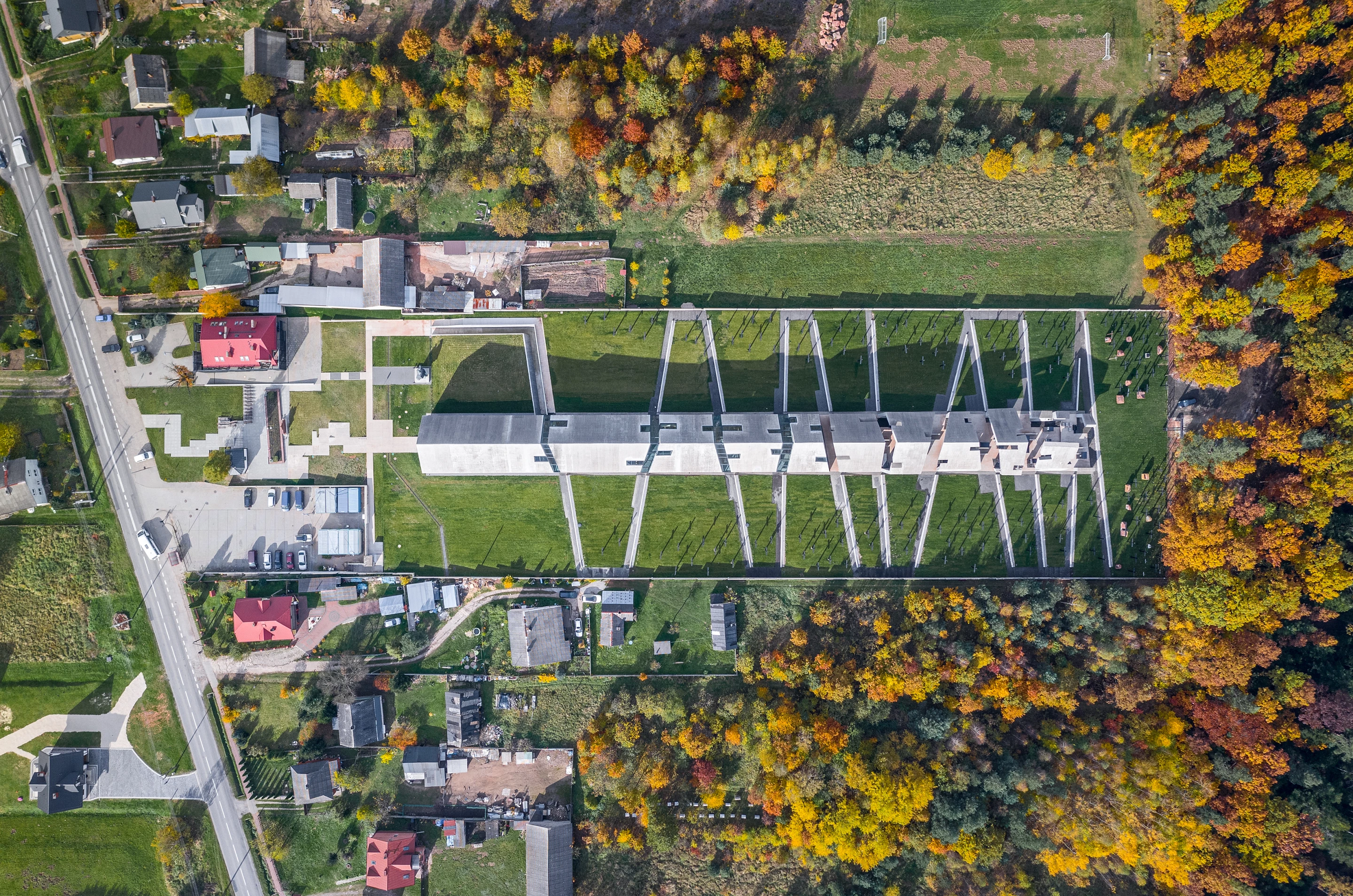Commissioned to commemorate the atrocities suffered by occupants of rural villages in Poland during Nazi occupation, Nizio Design International had to walk the tightrope of showing due respect and producing a head-turning design. The firm has risen to the occasion with its superb Mausoleum of Martyrdom of Polish Villages in Michniów.
As its name suggests, the project is located in Michniów, which is in southern Poland. It was declared the winner of an architecture competition held back in 2009 and was originally due to open in 2016, but has taken until now to realize due to unforeseen circumstances.

The museum is spread over 16,000 sq m (roughly 172,000 sq ft) and takes the form of 11 connected house-like concrete segments, which range from fully-formed to skeletal framework. This is meant to depict the destruction of Michniów's homes and people.
Visitors enter into the "House of Tranquility" which is fully formed and then pass through multiple exhibition spaces as the building reflects decay and damage, until the spaces are open to the elements at the end.
In addition to designing the building's overall form, Nizio Design International handled the permanent exhibition inside. The firm has installed a series of photos, historical documents and videos depicting the atrocities. There are also charred ruins on display, including wood and steel sourced locally.

"Entering the premises, the visitor first enters five closed segments," explains Nizio Design International. "The sculptural, degraded part is open to nature, sky and landscape, changing – sometimes abruptly – as the weather conditions change. Through the glazing and the rips in the structure one can see the larch crosses surrounding the building. Their shape and symbolism inspired the form of the rips. The expressive architecture and intentional, progressive degradation of the solid create a unique atmosphere of the place. The light reaches the interior of the building through the cracks between the segments; depending on the time of the day and the season, it models the area of the permanent exhibition, located in the closed and open parts of the building."
The project officially opened on July 12th, which was the 78th anniversary of the pacification of Michniów – and is also recognized as the Day of Struggle and Martyrdom of Polish Villages.
Source: Nizio Design International












